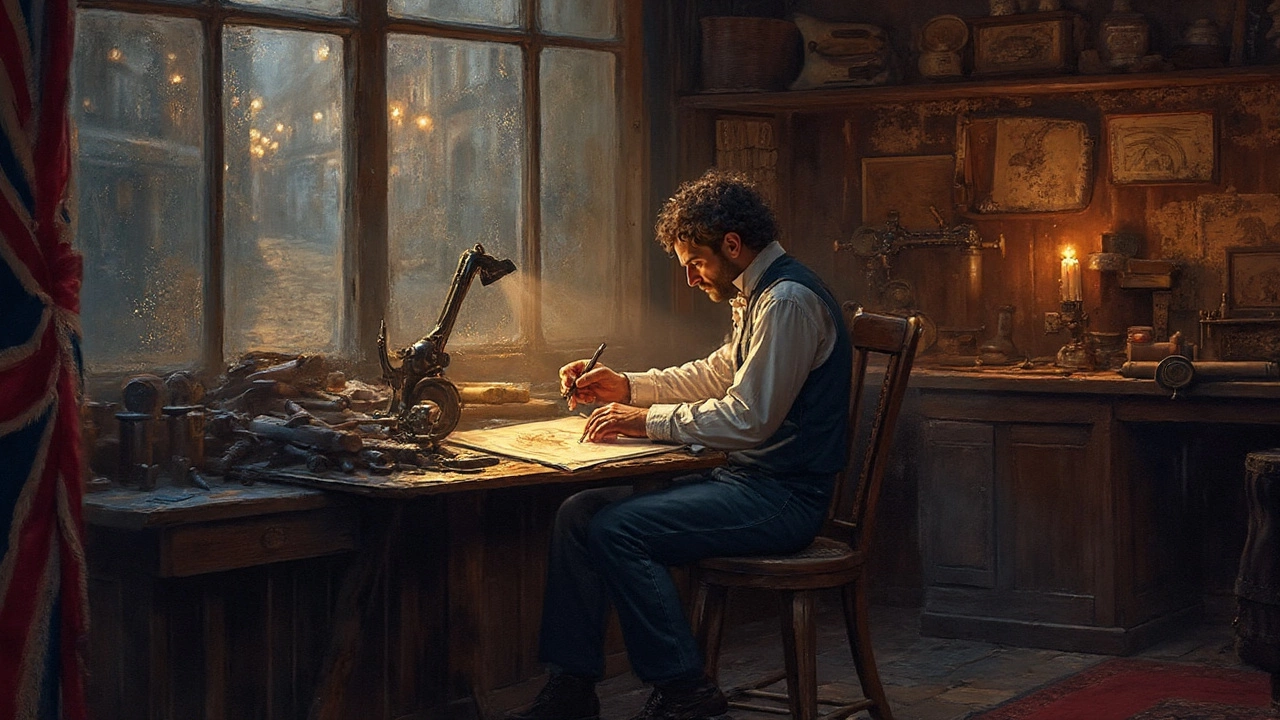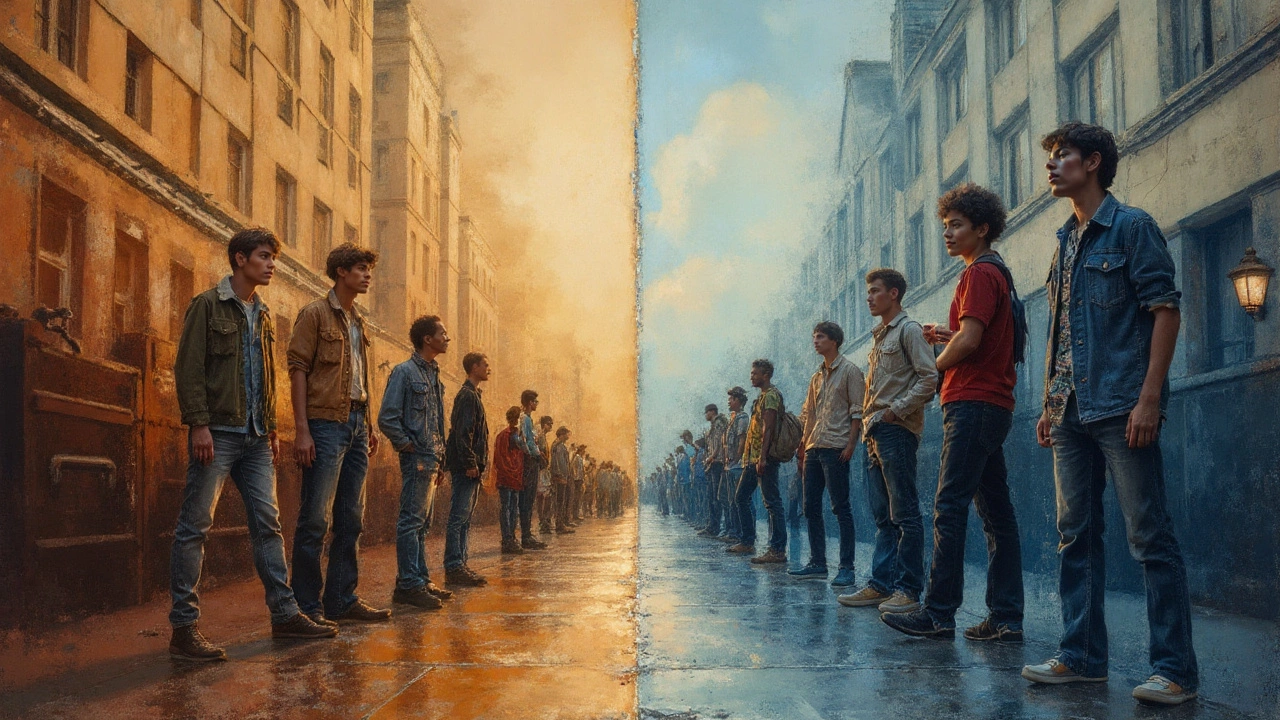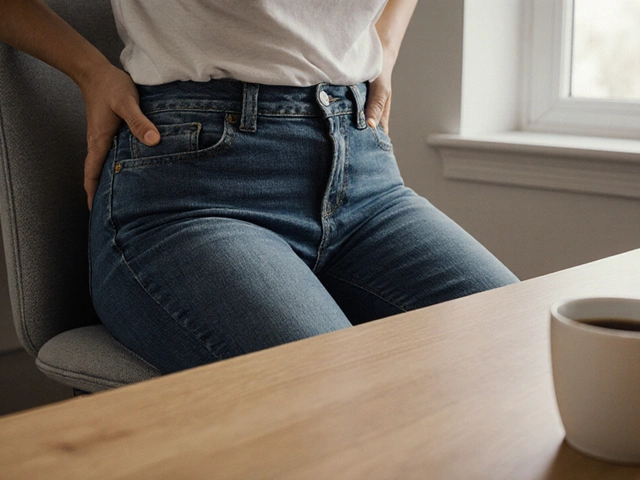Oldest Jeans Brand: The True Origin of Denim Legends

- Cleo Fairchild
- 3 August 2025
- 0 Comments
If you rummage through any closet on the planet, odds are you’ll find a pair of jeans. But have you ever stopped to wonder who actually made the first jeans? Here’s a wild thought: denim was once strictly workwear for gold miners and cowboys, not the stuff of TikTok try-ons and runway shows. The story isn’t just about fashion—it’s an adventure full of bold ideas, clever inventions, and a couple of guys with surprisingly different takes on what ‘rugged style’ really meant. Let’s unravel the real roots of jeans culture and obsess over the brand that started it all.
Birth of Jeans: A Wild West Plot Twist
Back in the mid-1800s, jeans weren’t about making a fashion statement. They were invented out of pure necessity. Imagine you’re digging for gold during the California Gold Rush. You want pants that won’t split open after a week in the mud. Enter Levi Strauss, a German immigrant with a nose for opportunity. In 1853, he lands in San Francisco with a wagon full of rough canvas fabric, ready to make tents and wagon covers. That plan changes when he meets a tailor named Jacob Davis. Jacob’s customers—miners, ranch hands—keep coming in complaining about ripped pants. He starts reinforcing their trousers with copper rivets, which, honestly, is a stroke of genius. The pants that could withstand a beatdown? Instant hit.
In 1873, Strauss and Davis get a patent for their riveted work pants, and that’s the exact moment jeans as we know them are born. They aren’t blue yet, though. The denim fabric—a twill weave from France (the word “denim” comes from “serge de Nîmes”)—comes into play soon after. The indigo dye gives us those classic blue jeans everyone recognizes. The story could’ve stopped there, but people started noticing. Cowboys, railroad workers, and eventually Hollywood actors all made jeans their own.
So who’s the oldest jeans brand? Levi Strauss & Co. is the undisputed original. And it’s not just a logo—Levi’s has actually held onto its claim for over 170 years. They built the prototype for what we now can’t live without. If you ever spot a pair of Levi’s 501s from the turn of the century at a flea market, just remember: you’re practically holding a piece of wild west treasure. Those pants played a real role in American history. The US Patent Office even recognizes Strauss and Davis’s 1873 jeans patent as one of the clothing industry’s most important milestones.
Close Contenders and The Denim Boom
Levi’s might be the OG, but it didn’t take long for others to jump on the jeans train. Lee and Wrangler are the biggest names that followed close behind. Lee Mercantile Company popped up in Kansas in 1889, while Wrangler’s roots trace back to the 1940s under Blue Bell. Lee was the first to introduce the zip fly in 1926 with their 101 Cowboy Pant, a move that made button flies look pretty old-school. Wrangler warpped up a serious cowpoke vibe, collaborating with rodeo stars to make their jeans the cowboy uniform of choice. These two brands quickly carved their own spots in denim folklore, though neither can claim “first.”
But let’s get nerdy for a second. The oldest surviving known jeans aren’t anything flashy. The oldest Levi’s in existence—nicknamed the “Nevada jeans”—date back to 1879 and are locked away in a fireproof vault at Levi’s headquarters in San Francisco. They’ve even surfaced at auctions where battered, century-old Levi’s jeans have sold for well over $100,000. That’s because people crave that original American spirit woven into every stitch. These artifacts tell stories: denim patched by hand, stains from actual cowhand rodeos, and pockets designed for carrying mining tools. That’s about as authentic as style gets.
But no matter who started making jeans, every classic brand owes a debt to that original Levi’s DNA. Without Strauss and Davis’s hustle and creative thinking, today’s world of streetwear, high fashion, and everyday comfort would probably look very different.
Cultural Shifts: How Levi's Went from Workwear to World Icon
Okay, so jeans started as tough-as-nails work pants. The pivot to coolness took some surprising turns. In the 1950s, James Dean and Marlon Brando wore jeans in their movies—suddenly, working-class trousers were shorthand for teenage rebellion and “I don’t care what you think” style. Pair that with the rise of rock and roll, and you’ve got a recipe for denim mania that never stopped simmering. Levi’s didn’t just ride this wave. Their ads, fits, and even stitching (checking those signature arcuate stitches on the back pockets?) turned jeans into the must-have badge for rebels, artists, skaters, and just about every other crowd. In the 1960s and 70s, the counterculture made jeans their protest uniform, patching and embroidering them with peace signs and slogans.
And it wasn’t just in the States. American jeans became a global obsession. In the USSR, you literally needed black market connections to get your hands on a pair. Today, Japanese denimheads collect and replicate Levi’s down to the exact copper rivet and shuttle loom. In Iran in the ‘80s, jeans were contraband. Flash forward, and everyone from New York rappers to Parisian models has owned a pair of Levi’s 501s or vintage Lee Riders. The transformation—from function to fashion—is mindblowing, but it only happened because those early brands laid down unbeatable quality and a kind of rough-and-ready attitude you just can’t fake. When you buy jeans today, you’re joining a global tribe, and a lot of that is thanks to Levi’s persistent cool factor, decade after decade.
Vintage Jeans: Value, Collecting, and Spotting Fakes
If you’ve ever wondered why some old jeans fetch jaw-dropping prices at auction, you’re not alone. The world of vintage denim collecting comes with its own rules and legends. Start with the “Big E” Levi’s—made before 1971, when the brand switched the red tab logo from capital letters (LEVI’S) to lowercase (Levi’s). These are gold dust to collectors. Then there’s selvedge denim—the kind finished on the edges with a clean stripe, woven on old looms. It’s tougher, heavier, and feels different from mass-market jeans. Everyone from thrift store pickers to Hollywood stylists hunts for “deadstock” (brand-new, vintage, old-label) pairs. Some rare 1880s Levi’s have even been pulled out of abandoned mines and fetched more than $80,000 at auction.
Of course, when money gets involved, fakes pop up. If you want to know if your find is legit, there are a few tricks. Look for the hidden rivets inside the back pockets—a Levi’s feature from the early years. Check the stitching pattern and weight of the fabric. Smell the denim. Authentic vintage jeans have that unmistakable musty smell from decades of storage. Purists say you can almost “feel” the difference between modern and vintage. There’s a community of hardcore denim nerds who can date a pair of Levi’s or Lee Riders by the color of the stitching or the shrink-to-fit tag design. If you want to get into collecting, start simple. Vintage stores and flea markets are full of surprises, and every snagged piece comes with its own wild story.
Jeans aren’t just clothes—they’re artifacts of hard work, rebellion, and nostalgia. People keep chasing after vintage pairs because they want to tap into those vibes, whether it’s a faded pair from a factory worker in 1950s Detroit or shredded 1980s punk jeans covered in patches. They’re the closest thing to wearable history most of us own.

Tips for Finding Authentic Old Jeans and Caring for Them
Diving into vintage jeans hunting is fun, but a little knowledge goes a long way. If you’re after the “real deal,” keep these quick tips in mind:
- oldest jeans brand like Levi’s: Look for details like rivets stamped with the company’s name, “Big E” red tabs (pre-1971), and chain-stitched hems.
- Check for selvedge outseams—turn the cuff inside out and look for a clean, colorful edge.
- Labels tell a story. A paper, cloth, or leather patch on the waistband can help date a pair of jeans to a decade.
- When in doubt, research the product code stamped on the inside pocket. Guides online can match up numbers to manufacturing dates.
Caring for vintage denim is almost spiritual for some people. First rule: avoid the washing machine as much as possible to keep the character. If you have to wash, turn the jeans inside out, use cold water, and a dash of gentle soap. To dry, hang them up—never use a dryer unless you want shrinkage and stiff fabric. For serious collectors, minor repairs often add to the authenticity and story, so don’t stress about a patched knee or frayed hem. They’re like scars—they prove a life well-lived.
If you’re buying online, ask for as many photos as possible, and compare tags, stitching, and details against trusted resources. Once you spot the quirks—maybe a “V” stitched into the waistband or fading on the thighs—you’ll start recognizing the real treasures.
One last tip: size up! Vintage jeans are stiff at first but mold to your body. Turns out, patience is a virtue even in fashion. Who knows? The next time someone asks about your jeans, you’ll have a story even better than any thrifted tee or designer handbag.


